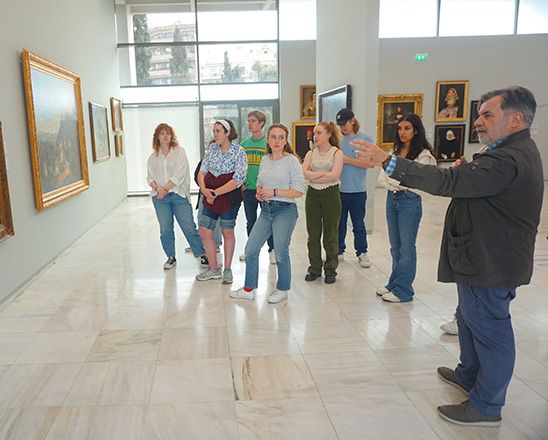
The Aegean Islands 1912 to the Present
![]()
Course Description
This course explores the history of Greece’s Aegean islands and the ways their geographical location made them a crossroads where the world of Greece encountered that of the East and the West from Antiquity to the present. If the same thing can be said of the Greek mainland, the Aegean Islands epitomize the way Greek culture was in conversation with neighboring as well as far away cultures. Moreover, this intermingling of cultures continued in the modern era when the Aegean was surrounded and was part of a system of national states. That is why rather than examine the Aegean islands as part of Greece, we will treat them as “islands” that is to say a geographically exposed entity that is especially open to outside influences. These cultural interactions unfolded across a wide range of spheres that we will examine as they emerged over time – architecture, economics, film, music, photography, politics, religion.
Our focus is a period from the early twentieth century to the present and our investigation of these successive cultural encounters will proceed chronologically. Our course is divided into 9 parts: the first is the pre-history of the era that concerns us and covers the Classical, Venetian and Ottoman Aegean; the second focuses on the transition of the Aegean from Ottoman rule to Greek nationhood; the third examines Italian rule and Italian architecture in the Dodecanese between the two world wars; the fourth deals with WWII and especially the Battle of Crete; the fifth section is concerned with the post-WWII era growth of tourism; the sixth explores the role of religion and traditional forms of worship; the seventh addresses the Greco-Turkish conflict over the Aegean from the 1970s to the present; the eighth is on the refugee flows from the Middle East in the 2010s and the ninth looks at daily life on the islands.
By the same token, this course illustrates the ways historians study the past through privileging an investigation of causes and effects over a simple recitation of dates and facts; inquiring about the meaning of significance of events for a particular era or period; analyzing texts by placing them in their proper historical context; evaluating sources; and using a broad range of data including primary sources (evidence produced contemporaneously to the event we are studying), secondary sources (ex-post facto assessments either by lay-persons or academic historians), films, music and photographs.



